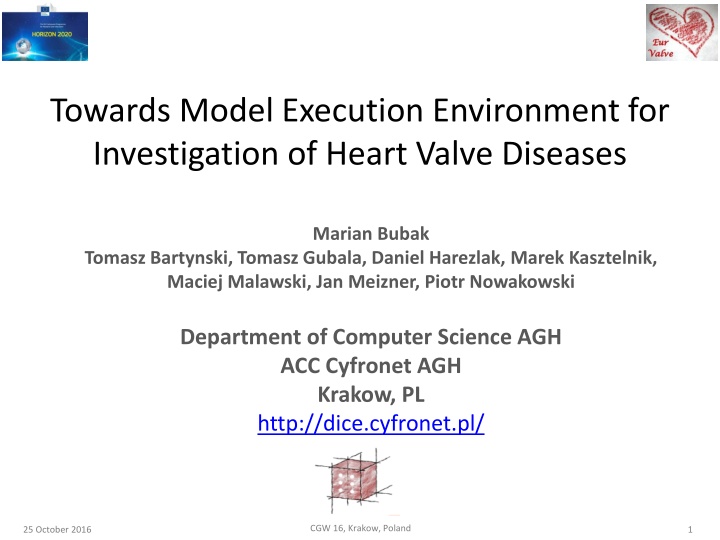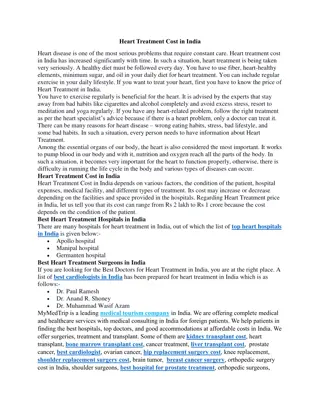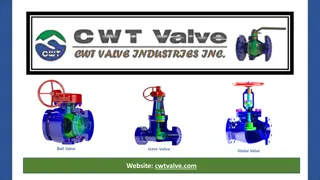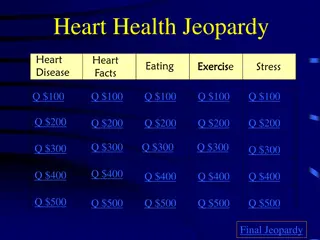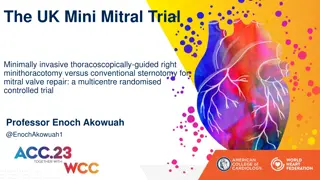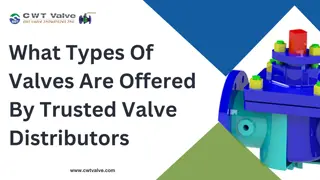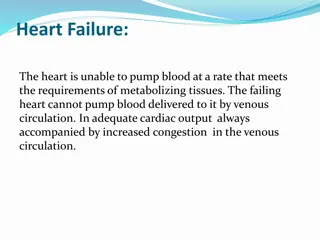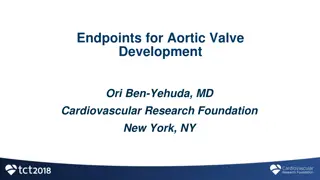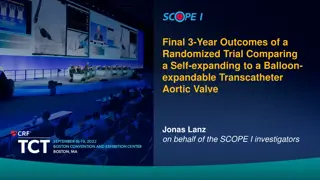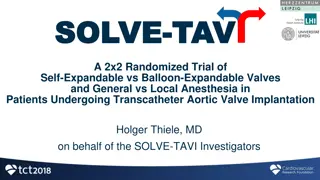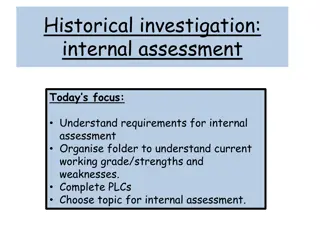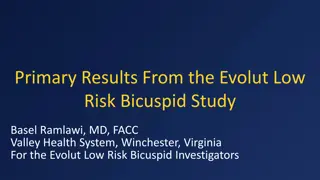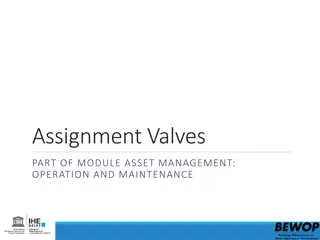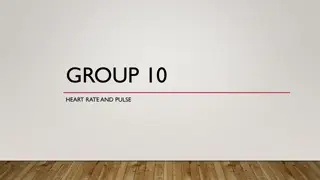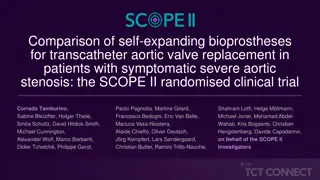Investigation of Heart Valve Diseases with Model Execution Environment
Atmosphere Cloud Platform facilitates research on personalized medicine for heart valve diseases, aiming to develop a decision support system for clinical use. The project focuses on combining complex modeling tools to evaluate medical prospects and outlook for individual patients with cardiovascular symptoms suggesting valvular heart disease.
Download Presentation

Please find below an Image/Link to download the presentation.
The content on the website is provided AS IS for your information and personal use only. It may not be sold, licensed, or shared on other websites without obtaining consent from the author.If you encounter any issues during the download, it is possible that the publisher has removed the file from their server.
You are allowed to download the files provided on this website for personal or commercial use, subject to the condition that they are used lawfully. All files are the property of their respective owners.
The content on the website is provided AS IS for your information and personal use only. It may not be sold, licensed, or shared on other websites without obtaining consent from the author.
E N D
Presentation Transcript
Towards Model Execution Environment for Investigation of Heart Valve Diseases Marian Bubak Tomasz Bartynski, Tomasz Gubala, Daniel Harezlak, Marek Kasztelnik, Maciej Malawski, Jan Meizner, Piotr Nowakowski Department of Computer Science AGH ACC Cyfronet AGH Krakow, PL http://dice.cyfronet.pl/ CGW 16, Krakow, Poland 25 October 2016 1
Outline 1. Motivation personalized medicine; Virtual Physiological Human 2. Objectives 3. Data and computing flow 4. Model Execution Environment 5. File store 6. Integrated security 7. Visualization module 8. Summary http://www.vph-institute.org/ CGW 16, Krakow, Poland 25 October 2016 2
CGW 16, Krakow, Poland 25 October 2016 3
Atmosphere Cloud Platform VPH-Share Master Interface host portal.vph-share.eu 96 CPU cores 184 GB RAM Head Node Worker Node Worker Node Worker Node Worker Node Cloud Management Portlets Provide GUI elements which enable service developers and end users to interact with the Atmosphere platform and create/deploy services on the available cloud resources 4 TB storage Worker Node Worker Node Worker Node Worker Node private IP space Image store VPH-Share cloud site at ACC CYFRONET AGH WP2 Core Services Host vph.cyfronet.pl Secure RESTful API (Cloud Facade) 128 CPU cores 256 GB RAM Head Node Worker node w/large resource pool ( fat node ) Atmosphere Core Authentication and authorization logic Communication with underlying computational clouds Launching and monitoring service instances Creating new service templates Billing and accounting Logging and administrative services 4 TB storage Worker node w/large resource pool ( fat node ) private IP space Image store VPH-Share cloud site at UNIVIE Atmosphere Registry (AIR) Massive (functionally limitless) hardware resource pool API host Worker Node user accounts public IP space Worker Node Image store available cloud sites services and templates Amazon Elastic Compute Cloud (EC2) European availability zone CGW 16, Krakow, Poland 25 October 2016 4
Motivation Investigations leading to practical implementations of personalized medicine are challenging The main goal of the EurValve project is to combine a set of complex modeling tools to deliver a workflow which will enable evaluation of medical prospects and outlook for individual patients presented with cardiovascular symptoms suggesting valvular heart disease This research should result in a decision support system (DSS) which can be applied in clinical practice This research activity requires a dedicated problem solving environment which we refer to as the Model Execution Environment (MEE) CGW 16, Krakow, Poland 25 October 2016 5
DSS and Research Environment CGW 16, Krakow, Poland 25 October 2016 6
Data and action flow Data and action flow consists of steps involving image segmentation, proteomics analysis and literature mining to construct system models which, in turn, enable building reduced order models as the knowledge base for the DSS. CGW 16, Krakow, Poland 25 October 2016 7
Objectives To develop and provide the necessary infrastructure to: Collect, represent, annotate and publish core homogeneous data Store and give secure access to the participating clinical centres and to the development partners to the necessary data Execute the models in the most appropriate computational environment (private workstation, private cloud, public cloud) according to needs Support real-time multiscale visualisation. To develop an integrated security system supporting: Authentication and authorisation Data encryption for secure processing in public clouds To deploy and operate the developed infrastructure, ensuring: Quality of software components deployed and installed Quality of service, including such aspects as availability, responsiveness and cost efficiency CGW 16, Krakow, Poland 25 October 2016 8
Examples of user requirements 1. Execution environment delivers access to commercial numerical computing environments such as Matlab and AnsysCFD solvers (it will be used to deliver 0D system model and ROM creation of 4D CFD) Execution environment delivers access to significant computer power and storage (ROM creation requires a lot of computer power and storage, >1000 CPU, many TB of HDD) Some of the computations will be executed outside the research environment (e.g. Segmentation will be run locally with node-locked license) Data is transferred from data warehouse to compute environment Sensitivity analyses are visualized while the computation takes place The environment should support interactive and batch processing Interaction with selected services should be automated by scripting or Web UI interfaces 2. 3. 4. 5. 6. 7. CGW 16, Krakow, Poland 25 October 2016 9
Basic mode of access to HPC A user, utilizing a series of secure shell connections, transfers files (e.g., simulation input files, heart valve 3D model) to the HPC cluster's file system, submits a computational job execution (for instance, a fluid dynamics simulation) and retrieves job execution output (e.g., the visualization of the performed blood flow simulation through the uploaded heart model). CGW 16, Krakow, Poland 25 October 2016 10
Middleware based access to HPC The user delegates one's credentials to middleware services, which in turn manage user's input and output data, create and submit the computational job description, actively monitor job execution on the remote computational cluster, and notify the user of completion status. Sometimes such services are also able to visualize simulation execution outputs to the user. CGW 16, Krakow, Poland 25 October 2016 11
Vision: Model Execution Environment CGW 16, Krakow, Poland 25 October 2016 12
Alpha version of MEE 3 services EurValve File Store - https://files.valve.cyfronet.pl EurValve Portal - https://valve.cyfronet.pl Security subsystem CGW 16, Krakow, Poland 25 October 2016 13
EurValve File Store Deployment of a file repository compliant with the WebDav protocol, including search capabilities (RFC 5323) Modification and integration of the FileStore component (developed within VPH-Share) allowing for web-based file browsing/downloads/uploads as part of the newly created EurValve portal Securing the file repository with a EurValve's security compatible mechanism CGW 16, Krakow, Poland 25 October 2016 14
File Store - multi policy approach Access policies are attached to different nodes according to user sharing actions. Private spaces can be created for individual users and groups. CGW 16, Krakow, Poland 25 October 2016 15
Model Execution Environment Prototype Components Valve portal discover collected files for patient clinical case, submit blood flow computation into Prometheus supercomputer, monitor computation execution, discover results Rimrock tool for submitting jobs into Prometheus supercomputer PLData web based file browser for Prometheus files Prometheus supercomputer Typical use case 1. Create new Patient clinical case 2. Discover files connected with the Patient 3. Run blood flow computation on Prometheus supercomputer 4. Monitor computation execution 5. Discover produced results and update clinical case progress CGW 16, Krakow, Poland 25 October 2016 16
Integrated Security and Data Protection Step 1-2: Users authenticate themselves with the selected identity provider (hosted by the project or external trusted one) and obtain a secure token which can then be used to authenticate requests in DSS and RCE. Step 3-4: Authorization to use computational services is granted in accordance with policies stored in PDP. Optionally user may request service access from resource manager. Main Portal Security System PRP PDP AuthZ Rules Data Rules IdP PRP 4b 4a 2 PEP PEP DSS in Clinical Environment On-line computing (a) Research Computing Environment Off-line computing (b) 1a 1b 3b 3a Model Execution Environment Data Local Model Execution Environment Warehouse User File Storage Clinical Data IdP - Identity Provider PDP - Policy Decision Point PRP - Policy Retrieval Point PEP - Policy Enforcement Point Private Cloud Public Cloud Workstation HPC Cluster CGW 16, Krakow, Poland 25 October 2016 17
PDP, PEP typical use case Components PDP policy decision point implemented as Valve Portal REST interface UI to configure permissions for concrete resource. Permission can be given for concrete user or for the group of users PEP policy enforcement point implemented as Nginx module Use case 1. A request without JWT (JSON web token) is made to a service secured by PEP the unauthorized response code is returned (401) 2. A request accompanied by a valid JWT is made, resulting in an access denied (403) exception 3. Another user registers a service and authorizes other users to access it 4. The procedure performed in step 2 is repeated this time permission is granted (200) and secured content is returned to the user CGW 16, Krakow, Poland 25 October 2016 18
File Store typical use case Components UI to facilitate user login and data store access Authentication mechanisms PDP, PEP policy decision/enforcement point to grant/revoke access to resources on the basis of resource owners decisions Scenario 1. User 1 logs into the UI, accessess the File Store component and creates a directory 2. User 1 uploads a file to the newly created directory 3. User 2 logs in and attempts to retrieve the file however, directory access is denied due to lack of sufficient permissions. 4. User 1 grants User 2 read-only access for the newly created directory 5. User 2 is now able to enter the directory and retrieve its content. He is, however, unable to upload new files due to the lack of write permissions. 6. User 1 extends User 2 s permission set with write access. 7. User 2 is now able to create new files and subdirectories in the target directory. CGW 16, Krakow, Poland 25 October 2016 19
Real-time Multiscale Visualization Deployment to local and remote Model Execution Environments Using container technology for packaging Integration with HPC, local and research computing infrastructure Visualization components available as embeddable web browser views CGW 16, Krakow, Poland 25 October 2016 20
MEE services at Cyfronet (alpha versions) EurValve Portal URL: https://valve.cyfronet.pl Registration at: https://valve.cyfronet.pl/users/sign_up EurValve File Store URL (docs): https://files.valve.cyfronet.pl WebDAV endpoint (portal account required): https://files.valve.cyfronet.pl/webdav CGW 16, Krakow, Poland 25 October 2016 21
Summary Detailed requirements formulated and state-of-the-art in the area of valvular diseases analyzed Detailed design recommendations relating to model- based research environments established Prototypes of the Model Execution Environment, with supporting File Store and components facilitating simulations with the aim to develop decision support systems for heart diseases Integrated Security CGW 16, Krakow, Poland 25 October 2016 22
Towards Complete Model Execution Environment CGW 16, Krakow, Poland 25 October 2016 23
H2020 Project 689617: EurValve http://www.eurvalve.eu http://dice.cyfronet.pl CGW 16, Krakow, Poland 25 October 2016 24
